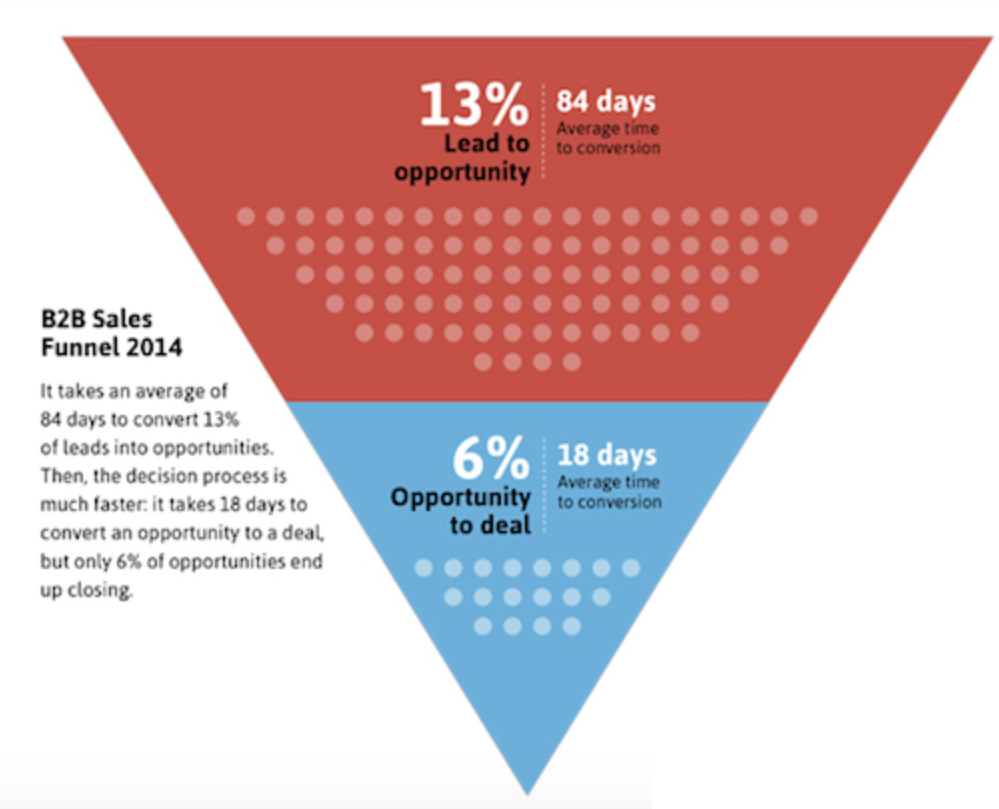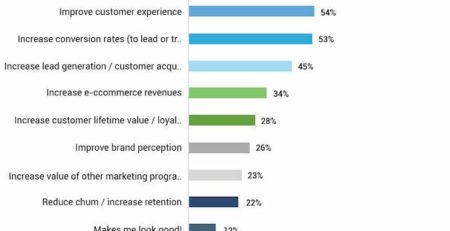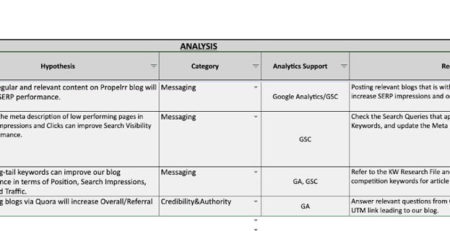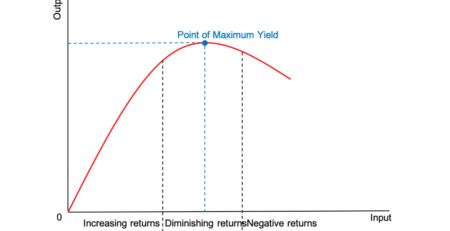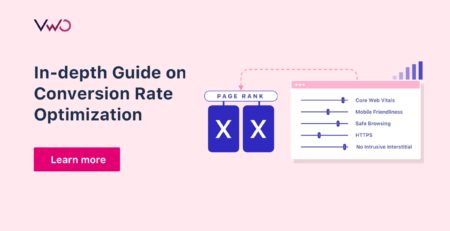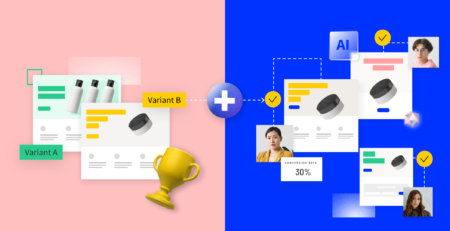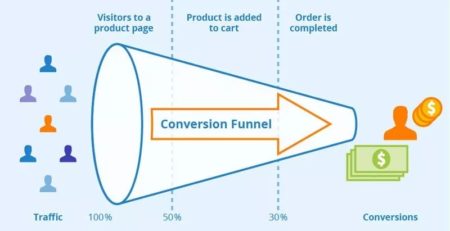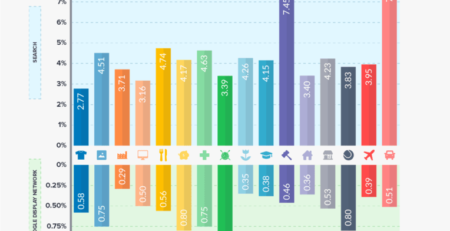B2B Conversion Rate Optimization: From Leads To Long-Term Success
Welcome to the world of B2B Conversion Rate Optimization: From Leads to Long-Term Success!
In this article, we’ll explore how businesses can turn leads into long-term customers, and achieve greater success.
So, get ready to discover the tips and strategies that can take your B2B conversions to new heights!
Have you ever wondered how some companies excel at converting leads into loyal customers?
Well, you’re in the right place!
In this article, we’ll demystify the world of B2B conversion rate optimization and show you how to make lasting connections with your target audience.
Ready to unlock the secrets of B2B conversion rate optimization?
Get ready to uncover the strategies that successful businesses use to turn leads into loyal customers.
Are you excited? Great! Let’s dive in and discover the power of B2B conversion rate optimization together!
Successfully boosting your B2B conversion rates requires a strategic approach. Implement these essential tactics to achieve long-term success:
1. Analyze your target audience and understand their pain points.
2. Optimize your website’s user experience and ensure it aligns with your target audience’s needs.
3. Craft compelling and personalized messaging throughout the customer journey.
4. Implement effective lead nurturing campaigns to build trust and credibility.
5. Continuously test and optimize your conversion funnel for maximum results.
Follow these steps to optimize your conversion rate and achieve sustainable success in B2B sales.
B2B Conversion Rate Optimization: From Leads to Long-Term Success
Welcome to our comprehensive guide on B2B Conversion Rate Optimization. In this article, we will delve into the strategies and techniques that can help businesses optimize their conversion rates, turning leads into long-term success. From understanding the B2B buying journey to implementing data-driven approaches, we will cover it all. So, let’s dive in and start maximizing those conversions!
The B2B Buying Journey: Understanding Your Audience
Before we dive into the strategies and tactics for optimizing conversions, it is crucial to understand the B2B buying journey. In the B2B realm, the decision-making process is often complex, involving multiple stakeholders and a longer sales cycle. To effectively optimize conversions, businesses must identify their target audience, map out their buying journey, and tailor their marketing efforts accordingly.
Start by creating buyer personas, fictional representations of your ideal customers. Conduct market research, analyze customer data, and determine the pain points, motivations, and goals of your target audience. This will help you tailor your messaging, content, and offers to resonate with their needs and desires at each stage of the buying journey.
By understanding your audience and mapping out their journey, you can create targeted content and personalized experiences that address their pain points and build trust and credibility. This will ultimately lead to higher conversion rates and long-term business success.
Implementing Data-Driven Optimization Strategies
In today’s digital world, data is king. To optimize conversion rates, businesses must analyze and utilize relevant data to drive decision-making and improve performance. Here are some data-driven strategies you can implement:
1. Tracking and Analyzing Key Metrics
Identify the key metrics that matter to your business, such as conversion rate, bounce rate, average session duration, and ROI. By monitoring these metrics, you can uncover insights into your website’s performance and identify areas for improvement.
Utilize web analytics tools like Google Analytics to track and analyze these metrics. Set up goals and funnels to measure the effectiveness of your conversion funnels and identify any bottlenecks or areas where users drop off.
Regularly review and analyze the data to identify patterns and trends. This will help you make data-driven decisions to optimize your conversion rates.
2. Conducting A/B Testing
A/B testing, also known as split testing, is a technique that involves creating two or more versions of a webpage or element and testing them against each other to determine which performs better in terms of conversions.
By testing different variations of your website’s design, layout, copy, and CTA placement, you can identify the elements that resonate most with your audience and lead to higher conversion rates.
Make sure to test one element at a time to accurately determine its impact on conversion rates. Regularly review the data and iterate on your designs to continuously improve your conversion rates.
3. Personalization and Segmentation
Personalization is key to driving conversions in the B2B space. By delivering personalized experiences and content tailored to specific audience segments, you can increase engagement and conversion rates.
Segment your audience based on various criteria such as industry, job title, company size, and behavior. Then, personalize your messaging and offers to resonate with each segment’s unique needs and pain points.
Utilize marketing automation tools and customer relationship management (CRM) software to streamline the personalization process and deliver targeted messages at scale.
Beyond Conversion: Long-Term Success Factors
While optimizing conversions is important, long-term success in the B2B space goes beyond just increasing conversion rates. Here are three factors that contribute to long-term success:
1. Relationship Building
In the B2B realm, building strong relationships is essential. Focus on nurturing leads and engaging with customers beyond the initial conversion. Implement strategies like email marketing, personalized follow-ups, and customer loyalty programs to foster long-term relationships and drive repeat business.
Invest in customer success teams and provide exceptional customer service. By prioritizing customer satisfaction and building lasting relationships, you can create brand advocates who will refer new leads and contribute to your long-term success.
2. Continuous Optimization and Innovation
B2B marketing is ever-evolving. To stay ahead of the competition and ensure long-term success, businesses must continuously optimize and innovate their strategies and tactics.
Stay up to date with industry trends, monitor competitor campaigns, and experiment with new approaches. Embrace emerging technologies, such as artificial intelligence and machine learning, to enhance your marketing efforts and gain a competitive edge.
Regularly review your conversion data, gather feedback from your audience, and adapt your strategies accordingly. The key to long-term success is being agile and willing to adapt to changing market dynamics.
3. Data-Driven Decision Making
Data should be at the heart of your decision-making process. Continuously analyze and leverage data to inform your marketing strategies and optimize your conversion rates.
Invest in marketing analytics tools and data visualization platforms to gain actionable insights. Regularly evaluate your performance metrics, track the effectiveness of your marketing campaigns, and make data-driven decisions to drive long-term success.
In conclusion, optimizing B2B conversion rates requires a deep understanding of your audience, implementing data-driven strategies, and focusing on long-term success factors beyond the conversion itself. By engaging in continuous optimization, building strong relationships, and leveraging data, businesses can unlock the full potential of their B2B conversion rate optimization efforts and achieve long-term success. So, start implementing these strategies today and watch your conversions soar!
Key Takeaways: B2B Conversion Rate Optimization: From Leads to Long-Term Success
- 1. Understand your target audience and their pain points.
- 2. Create a personalized and compelling value proposition.
- 3. Optimize your website’s user experience to convert leads.
- 4. Implement lead scoring and nurturing strategies for long-term success.
- 5. Continuously analyze and optimize your conversion rates.
Frequently Asked Questions
Welcome to our FAQ section on B2B Conversion Rate Optimization! Here, we answer some common questions related to turning leads into long-term success. Whether you’re new to the concept or a seasoned pro, these Q&A pairs should help you gain a better understanding of this important topic.
1. How can B2B conversion rate optimization help my business?
B2B conversion rate optimization is essential for your business because it focuses on maximizing the number of leads that turn into long-term success. By implementing strategies to increase your conversion rates, you can improve your return on investment and boost your overall business growth. It involves analyzing data, identifying areas for improvement, and implementing changes to your marketing and sales processes.
By optimizing your conversion rates, you can generate more qualified leads, increase revenue, and enhance customer satisfaction. It’s a continuous process that allows you to fine-tune your marketing efforts and align them with the needs and preferences of your target audience. Ultimately, B2B conversion rate optimization can have a significant impact on the success and profitability of your business.
2. What are some key steps in B2B conversion rate optimization?
In B2B conversion rate optimization, there are several key steps you can take to improve your conversion rates. First, it’s important to understand your target audience and their pain points. This will help you create targeted messaging and offers that resonate with potential customers. Next, analyze your website’s user experience and make improvements to ensure it’s easy to navigate and encourages visitors to take action.
Another crucial step is to optimize your landing pages and forms. This involves making them visually appealing, concise, and user-friendly. Additionally, focusing on personalized content and effective call-to-actions can significantly impact your conversion rates. Lastly, constantly track and analyze your conversion data to identify areas for improvement and make data-driven decisions.
3. How long does it take to see results from B2B conversion rate optimization?
The time it takes to see results from B2B conversion rate optimization can vary depending on various factors. While some changes may lead to immediate improvements, others might take longer to show significant results. It’s important to remember that B2B conversion rate optimization is an ongoing process that requires continuous monitoring and adjustment.
Typically, you should start seeing some initial improvements within a few months of implementing your optimization strategies. However, it’s important to be patient and allow sufficient time to collect and analyze data to gain actionable insights. By consistently monitoring and optimizing your conversion rates, you can achieve long-term success for your business.
4. What are some common challenges in B2B conversion rate optimization?
Like any marketing strategy, B2B conversion rate optimization comes with its own set of challenges. One common challenge is understanding your target audience and delivering the right message to the right people at the right time. This requires thorough market research and a deep understanding of your ideal customer profile.
Another challenge is optimizing complex sales funnels and understanding the different touchpoints that contribute to conversions. It’s crucial to identify potential bottlenecks and remove any friction points in the customer journey. Additionally, tracking and analyzing the right metrics can be challenging, as it’s important to focus on meaningful data that directly correlates with conversion rates.
5. How can I measure the success of my B2B conversion rate optimization efforts?
Measuring the success of your B2B conversion rate optimization efforts is crucial to understanding the impact of your strategies and making informed decisions. One of the key metrics to track is your conversion rate, which measures the percentage of leads that convert into customers or take a desired action. By comparing your conversion rates before and after optimization, you can gauge the effectiveness of your efforts.
In addition to conversion rate, other metrics such as bounce rate, time on site, and click-through rate can provide valuable insights into user engagement and the overall effectiveness of your website and marketing campaigns. Furthermore, tracking revenue generated from converted leads can give you a clear picture of the monetary success resulting from your optimization efforts. By continually monitoring these metrics, you can assess the success of your B2B conversion rate optimization strategies and make data-driven improvements.
Conversion Rate Optimization for B2B — Whiteboard Friday
Summary
So, to sum it all up, when it comes to converting leads into long-term success in the B2B world, there are a few key things to keep in mind. Firstly, you need to understand your audience and tailor your messaging accordingly. Secondly, it’s important to have a smooth and user-friendly website that makes it easy for visitors to take action. Thirdly, utilizing data and analytics can help you identify areas for improvement and make data-driven decisions. Lastly, building trust and nurturing relationships with your leads through personalized communications can go a long way in increasing conversions and driving long-term success. By implementing these strategies, you’ll be well on your way to achieving your B2B conversion goals!

